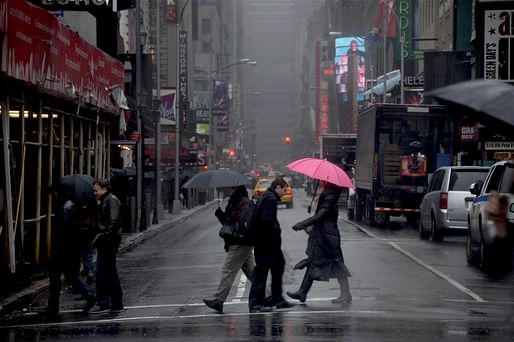

Most of New York City — more than 70% — can’t absorb rain due to all its concrete and pavement. This often leaves water falling from the sky with no place to go, leading to catastrophic and deadly flash floods. These calamities are especially common during cloudbursts, defined as a sudden but brief concentrations of heavy precipitation that typically accompany unusually hot weather, such as summer thunderstorms. Scientists expect the problem to worsen with climate change. — Gothamist
In response, the New York City Department of Environmental Protection has recently proposed an array of stormwater resilience strategies. One such plan is the Cloudburst Management plan, which will utilize a combination of grey infrastructure, such as sewer pipers and underground storage tanks, and green infrastructure, like trees and rain gardens, to absorb, store, and divert stormwater. Public locations, such as playgrounds and basketball courts, would double as temporary holding tanks.
This strategy aims to assist the city’s 150-year-old sewer system, which can only handle 1.75 inches of rain per hour. As reported by Gothamist, the technologies used for cloudburst management could handle up to 2.3 inches of hourly rainfall. New York City is funding the initiative with municipal and federal money from the likes of FEMA’s Building Resilient Infrastructure and Communities grant, which was recently bolstered by the Biden Administration via its Bipartisan Infrastructure Law. A pilot project at South Jamaica Houses in Queens has entered its construction phase. Four other sites will be identified by December 2022, with the city aiming to implement them by 2025.
1 Comment
so sumps. Nothing new here for NY. We had sumps everywhere in NY, and they often doubled as sports fields.
Block this user
Are you sure you want to block this user and hide all related comments throughout the site?
Archinect
This is your first comment on Archinect. Your comment will be visible once approved.